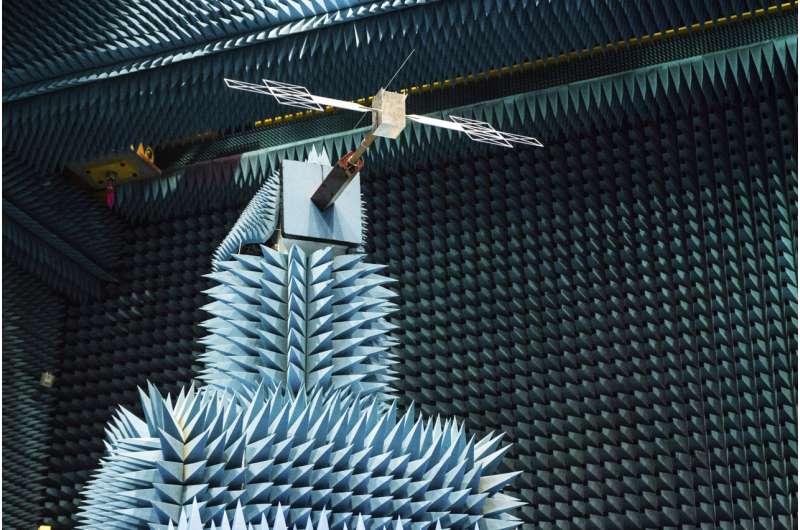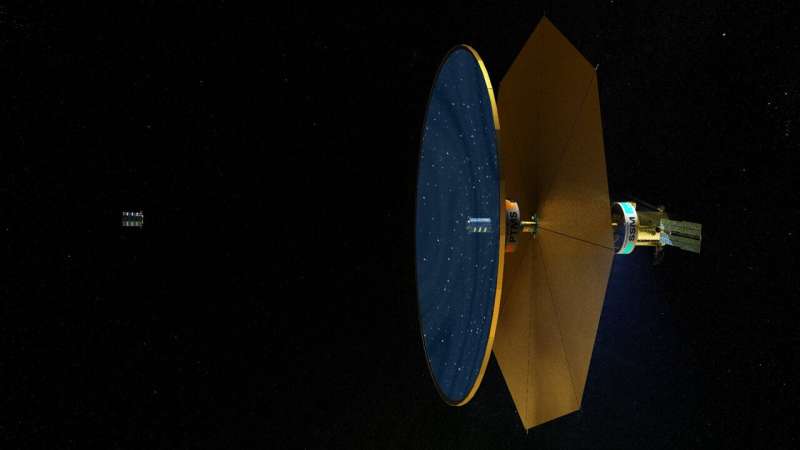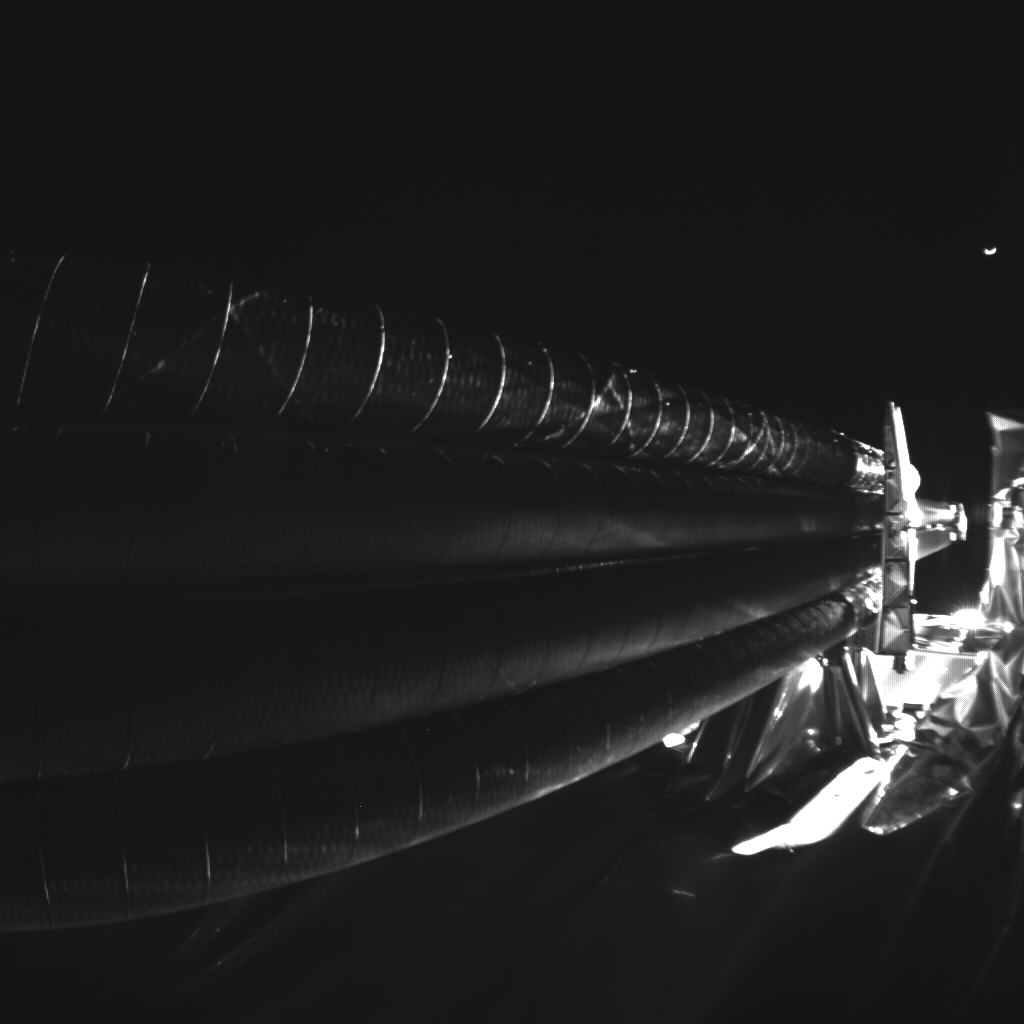
Copernical Team
ShadowCam images Lunar south polar region
 With the success of NASA's Artemis I mission and the agency recently naming the Artemis II crew, progress towards humanity's first-ever journey to the lunar South Pole region during Artemis III is well underway.
To prepare, NASA scientists and engineers are learning as much as possible about this shadowy region that promises to yield scientific discoveries that can help us learn about our
With the success of NASA's Artemis I mission and the agency recently naming the Artemis II crew, progress towards humanity's first-ever journey to the lunar South Pole region during Artemis III is well underway.
To prepare, NASA scientists and engineers are learning as much as possible about this shadowy region that promises to yield scientific discoveries that can help us learn about our Russia to stay on International Space Station through 2028
 Russia has committed it will remain on the International Space Station until 2028, backing away from a plan to leave the low-Earth orbiting laboratory next year, according to NASA.
NASA on Wednesday announced Russia would "support continued station operations" for another five years, while the United States, Japan, Canada and participating countries of the European Space Agency offered
Russia has committed it will remain on the International Space Station until 2028, backing away from a plan to leave the low-Earth orbiting laboratory next year, according to NASA.
NASA on Wednesday announced Russia would "support continued station operations" for another five years, while the United States, Japan, Canada and participating countries of the European Space Agency offered Key radar antenna stuck on Europe's Jupiter-bound spacecraft

A second pair of SES' O3b mPower satellites launched on a SpaceX rocket
 A SpaceX Falcon 9 launched two communication satellites, O3b mPower 3 and 4, and is now just one launch away from launching SES' next-generation broadband constellation in medium Earth orbit (MEO).
Falcon 9 lifted off Florida's Cape Canaveral Space Force Station, Space Launch Complex-40 (SLC-40), at 6:12 p.m. EDT (2212 GMT) on Friday.
O3b is an acronym that stands for "Other 3 Billio
A SpaceX Falcon 9 launched two communication satellites, O3b mPower 3 and 4, and is now just one launch away from launching SES' next-generation broadband constellation in medium Earth orbit (MEO).
Falcon 9 lifted off Florida's Cape Canaveral Space Force Station, Space Launch Complex-40 (SLC-40), at 6:12 p.m. EDT (2212 GMT) on Friday.
O3b is an acronym that stands for "Other 3 Billio What is the Fluidic Telescope?

The Fluidic Telescope (FLUTE) project team, jointly led by NASA and Technion–Israel Institute of Technology, envisions a way to make huge circular self-healing mirrors in-orbit to further the field of astronomy.
UAE astronaut exits ISS for first Arab space walk

Emirati astronaut Sultan Alneyadi stepped out of the International Space Station (ISS) Friday for the first space walk by an Arab astronaut, a moment touted by the UAE as a "milestone".
Alneyadi, 41, dubbed the "Sultan of Space" by his alma mater, become the first Arab astronaut to embark on a six-month space mission when he blasted off for the ISS in early March aboard a SpaceX Falcon 9 rocket.
On Friday, he undertook "the first Arab spacewalk in history," wearing a space suit that bears the Emirati flag, said the United Arab Emirates' Mohammed bin Rashid Space Centre (MBRSC), calling it "a new historic milestone".
Footage live-streamed by NASA showed the UAE astronaut exiting an ISS hatch.
"Sultan Alneyadi has egressed the hatch, the first ever space walk by an Arab astronaut," NASA said.
The space walk will last for around six hours and thirty minutes, according to MBRSC and NASA.
Alongside NASA's Stephen Bowen, Alneyadi will "change the Radio Frequency Group unit and prepare for the installation of solar panels," the Emirati astronaut said in a Twitter post carried by the official WAM news agency.
Work continues to deploy Juice RIME antenna

Juice’s ice-penetrating RIME antenna has not yet been deployed as planned. During the first week of commissioning, an issue arose with the 16-metre-long Radar for Icy Moons Exploration (RIME) antenna, which is preventing it from being released from its mounting bracket.
Week in images: 24-28 April 2023

Week in images: 24-28 April 2023
Discover our week through the lens
Raytheon unveils next-gen intelligent electro-optical sensing capability
 Raytheon Technologies (NYSE: RTX) has announced the launch of RAIVEN, a revolutionary electro-optical intelligent-sensing capability, which will enable pilots to have faster and more precise threat identification.
RAIVEN can identify objects optically and spectrally simultaneously in real-time - a single electro-optical/infrared, or EO/IR, system has never been able to do this before.
Raytheon Technologies (NYSE: RTX) has announced the launch of RAIVEN, a revolutionary electro-optical intelligent-sensing capability, which will enable pilots to have faster and more precise threat identification.
RAIVEN can identify objects optically and spectrally simultaneously in real-time - a single electro-optical/infrared, or EO/IR, system has never been able to do this before. China to promote space science progress on five themes
 China is planning to promote its space science development on five major themes, including research on habitable planets, and biological and physical sciences in space, a senior Chinese space expert said Tuesday.
China is making a national plan suggesting the deployment of more scientific satellites in the country's space program to yield leading breakthroughs globally on themes such as th
China is planning to promote its space science development on five major themes, including research on habitable planets, and biological and physical sciences in space, a senior Chinese space expert said Tuesday.
China is making a national plan suggesting the deployment of more scientific satellites in the country's space program to yield leading breakthroughs globally on themes such as th 
